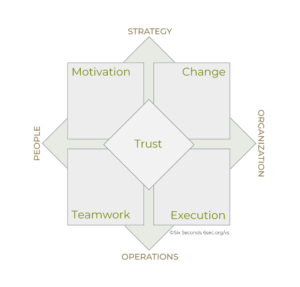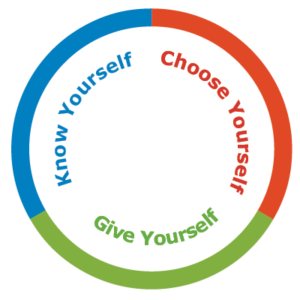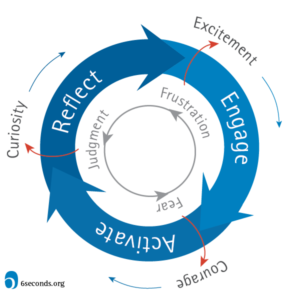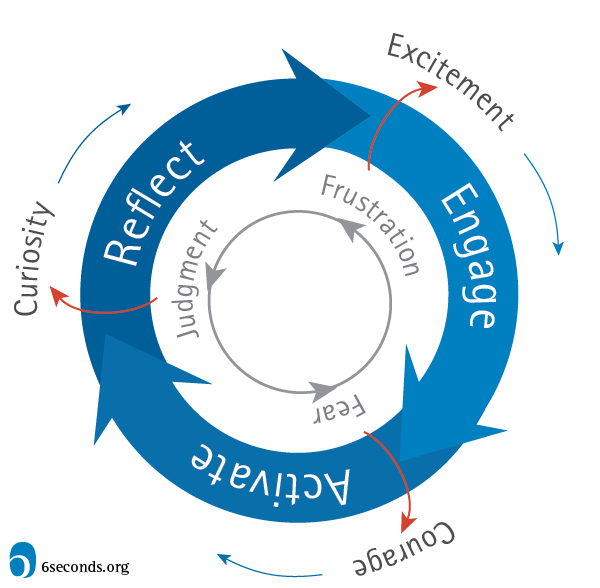TEST
“testing testing testing testing”
Six Seconds uses a robust methodology blending hard science with proven business experience. A description of the core methodology is below. Also see the eBook for Learning & Development Professionals.
 The Vital Signs Model defines performance as a people-driven result. It’s a framework for leadership, of team, and of a high performing organization. The four “arrows” on the outside depict performance. The five drivers, in blue, are how to achieve those results. Our research shows that nearly 60% of the performance is predicted by the strength of these five drivers.
The Vital Signs Model defines performance as a people-driven result. It’s a framework for leadership, of team, and of a high performing organization. The four “arrows” on the outside depict performance. The five drivers, in blue, are how to achieve those results. Our research shows that nearly 60% of the performance is predicted by the strength of these five drivers.
Within each driver, we’ve developed a framework of three specific components that allow the driver to function.
The Vital Signs Model forms the basis of the VS assessments: LVS for leaders. TVS for teams. OVS for organizations. The model and tool provides a robust framework for identifying the building blocks to a high performing culture.
To learn more, read about the Vital Signs Model and the global Vitality Research
See the VS assessments for leaders, teams, and organizations.
 The Six Seconds Model of Emotional Intelligence is a process framework for accessing and using emotions effectively. Unlike other theoretical models, this is an actionable, practical, simple process that facilitates performance. The basic model, to the left, is a cycle of three key pursuits:
The Six Seconds Model of Emotional Intelligence is a process framework for accessing and using emotions effectively. Unlike other theoretical models, this is an actionable, practical, simple process that facilitates performance. The basic model, to the left, is a cycle of three key pursuits:
Awareness: Tuning into emotional data.
Management: Responding intentionally.
Direction: Leading purposefully.
There are eight learnable, measurable skills that enable these three pursuits.
Read more about the model here.
The Six Seconds Emotional Intelligence test, SEI, measures these capabilities and the eight underlying competencies that enable these three pursuits.
 The Change MAP is provides a structure for organizational, team, and individual transformation. Integrated the latest research on change, this process puts people at the center of change, and integrates the rational/logical with emotional/human. Between 70-90 percent of change efforts fail, in large part, due to a failure to bring people on board.
The Change MAP is provides a structure for organizational, team, and individual transformation. Integrated the latest research on change, this process puts people at the center of change, and integrates the rational/logical with emotional/human. Between 70-90 percent of change efforts fail, in large part, due to a failure to bring people on board.
The Change MAP offers a solution. The blue arrows describe a rapid-prototyping cycle to move change into a learning process. The inner grey ring is the “Cycle of Resistance” – feelings that block change. The outer ring is the “Cycle of Engagement” – feelings that fuel change. The red arrows are the transitions — the work that creates the energy for the flywheel to spin.
Please see below for more about the Change MAP, and also this Case Study of a long-term project with the US Navy & Marine Corps.
Also see the book, INSIDE CHANGE: How to transform your organization with emotional intelligence (on 6seconds.org) | also see the book on Amazon.com
We utilize the Change MAP to structure programs. Here is an article on how we structure transformational learning using the MAP. MAP stands for “Management Process”; the model provides framework to drive transformation through three stages.
 Phase 1 – Engage
Phase 1 – EngageIn this stage, the goal is to build buy in to a plan.
Typically this requires definition of the current status using metrics and assessments (such as “Organizational Vital Signs”) to create a clear, accurate understanding of the current reality from a logical as well as emotional level. These metrics then are used to define the goals of the first iteration of the change cycle.
Since most change fails due to lack of engagement of people, this phase is all about enrollment. At a logical level, it’s moving from definition to strategy. At an emotional level it’s about people feeling heard, acknowledging the frustration, and building a seed of hope. People need to begin to feel that change is possible.
Based on the awareness and readiness created in phase 1, the next step is to create new successes by generating new knowledge, attitudes, and skills. Typically, this phase requires learning — new insight to see differently, shared vocabulary to communicate about what’s driving people, and new skills to build strong, healthy relationships.
In this phase, one of the key challenges is maintaining focus. A “training” is not enough to create change — it takes a process. We recommend a blended-learning approach with assessments, exceptionally powerful learning experiences, and personalized and small-group coaching to go from awareness into action.
In this phase, it’s also important to build organizational capacity. While outside facilitators and coaches can be effective, to “bake in” new approaches, ultimately internal colleagues need to take up the battle cry. Using effective “train the trainer” processes and creating collaboration between outside experts and internal champions, process leaders develop inside the organization.
In this phase, the goal is to experience success — for people to go into action and to experience for themselves that their change is working.
“Reflect” is about mining the previous phases. Return to the metrics collected, re-measure, identify progress. Examine the results from both logical and emotional lenses. Learn — learning doesn’t require success, it requires curiosity. Show ROI.
Typically, people think of change as something that is planned then executed, and that’s it. In reality, we know that high performing organizations don’t just make a change, they become good at change. This phase is key to that transformation because here the organization mines the successes and failures of the previous stages and then builds on those for the next round. This increases forward momentum — and accuracy.
The goal of this phase is to lock-in the wins — to be clear about the successes and failures and then to build on those to propel the change to the next level.
For a deeper understanding of these models and methods…
Contact us to and we’ll connect you with an expert or consultant.